The RIP Ransomware got its name not without reason. Specialists say that it really can become your worst nightmare, because this is a file scrambling threat. Unfortunately it encrypts all types of files, as research has shown, no matter, which extensions have them; the penetration of this threat means that you will be no longer able to access to the most valuable files, i.e. documents, pictures and music. An encrypted file will have a new file name extension (.) RIP), which is added next to the existing name, for example myprofilepicture.bmp.R.I.P. The user will discover the existence of a malicious application in their systems so soon. Delete the RIP Ransomware as soon as possible and send the requested money never, even if that means that it will be very difficult or even impossible to unlock the files encrypted by the RIP Ransomware payment of money is definitely not the best solution to the problem, because the cybercriminals often send not the promised decryption tool for users , after they have received the money. It is your decision as to whether they pay you the money or not, but keep in mind, not installed should allow the RIP Ransomware in your computer, because it makes changes in the system directory, so that she can continue to work in the system, after it has encrypted the files. This means that you cannot create any new files, because it encrypts all again from this Ransomware infection.
Once the RIP Ransomware inside the computer, it performs some important modifications. It has been found that she placed their executable file (with an arbitrary name) on the computer. In addition, it creates a new value in the directory key. As you already know, it is encrypted of course includes files that will be stored on the computer. It has been found that these Ransomware infection encrypts all files no matter what initial extension they have. Fortunately, system files are not affected. Just like other infections, which act in a similar way, it performs encryption of data to obtain money from the users. Don’t be so surprised, if you find a .txt file (Important.txt) on the desktop, which prompts Bitcoin 0.2 (about $155) to send to the specified Bitcoin address (1KdiPSdmqn7BsQFs9kqXdRqygruQeGzCx). It will be also said that files are not automatically unlock. To get the decryptor, the user must send an email to dj.elton@hotmail.co.uk after you have made the payment. Although the cybercriminals promise to send the decryption tool, it can be that they have no motivation, after they have received the money. To be honest, this phenomenon is so rare that it would be very smart to try to restore the files in another way than to send money.
There are two actions you can take to restore your data if you do not plan to pay the ransom. Of course, we cannot guarantee that they will help you to unlock all files. According to the specialists at Spyware.de remove users should try to restore the files from a backup (if you have created one before entering the Ransomware infection). Alternatively, you can use data recovery tools that can be downloaded for free from the Web. Of course, it may be that these tools will not help. Not delete these encrypted files even if you can not decrypt it, because experts could publish an effective free decryptor in the future. Of course, no one knows when this is going to happen be so patient.
You already know how the RIP Ransomware acts, but probably you don’t still know how Ransomware infections is usually disseminated. Researchers have found that they penetrate computer always illegal. It is known that these threats could pretend to be harmless applications and are hiding behind non-trusted third party Web pages. It is however obvious that file encrypted threats are most commonly distributed via spam emails. The malicious file of Ransomware infection is installed as an E-Mail attachment. Even if many users know that it is better to stay away from these emails you open attachments without fear, they look harmless, for example could a malicious file such as a. doc – or .pdf file.
The personal files are not for you unlocked, but the removal of the RIP Ransomware is still a must, so that she can encrypt any more files. To delete them manually, a user must find an executable file of Ransomware infection and then delete them. Also, any changes made to the system directory need to be undone. Since the removal of the malware is more or less complicated, see the manual removal instructions prepared for you below. To remove the remaining threats and to ensure that there are no traces of the RIP Ransomware, you scan your computer with SpyHunter (an automatic malware Remover).
How to delete the RIP Ransomware
Warning, multiple anti-virus scanners have detected possible malware in RIP Ransomware.
| Anti-Virus Software | Version | Detection |
|---|---|---|
| McAfee-GW-Edition | 2013 | Win32.Application.OptimizerPro.E |
| Malwarebytes | v2013.10.29.10 | PUP.Optional.MalSign.Generic |
| McAfee | 5.600.0.1067 | Win32.Application.OptimizerPro.E |
| VIPRE Antivirus | 22224 | MalSign.Generic |
| Malwarebytes | 1.75.0.1 | PUP.Optional.Wajam.A |
| Tencent | 1.0.0.1 | Win32.Trojan.Bprotector.Wlfh |
| Kingsoft AntiVirus | 2013.4.9.267 | Win32.Troj.Generic.a.(kcloud) |
| K7 AntiVirus | 9.179.12403 | Unwanted-Program ( 00454f261 ) |
| ESET-NOD32 | 8894 | Win32/Wajam.A |
| Dr.Web | Adware.Searcher.2467 | |
| VIPRE Antivirus | 22702 | Wajam (fs) |
| Qihoo-360 | 1.0.0.1015 | Win32/Virus.RiskTool.825 |
| Baidu-International | 3.5.1.41473 | Trojan.Win32.Agent.peo |
RIP Ransomware Behavior
- Modifies Desktop and Browser Settings.
- Steals or uses your Confidential Data
- Redirect your browser to infected pages.
- Slows internet connection
- Changes user's homepage
- RIP Ransomware Shows commercial adverts
- Shows Fake Security Alerts, Pop-ups and Ads.
RIP Ransomware effected Windows OS versions
- Windows 10
- Windows 8
- Windows 7
- Windows Vista
- Windows XP
RIP Ransomware Geography
Eliminate RIP Ransomware from Windows
Delete RIP Ransomware from Windows XP:
- Click on Start to open the menu.
- Select Control Panel and go to Add or Remove Programs.
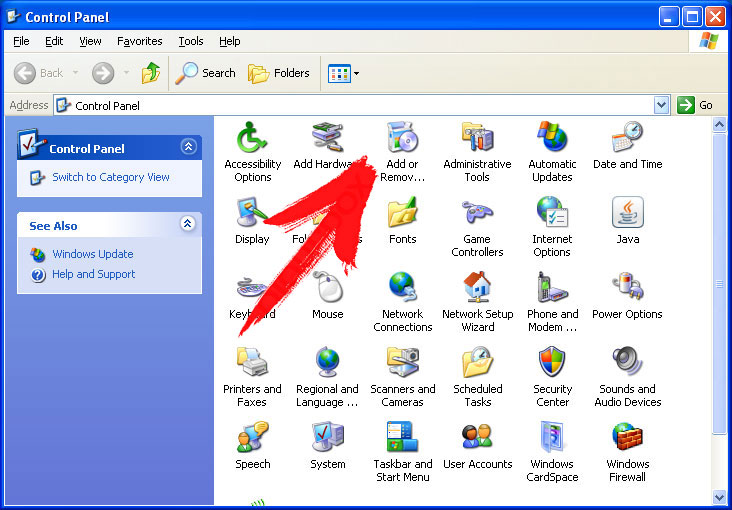
- Choose and remove the unwanted program.
Remove RIP Ransomware from your Windows 7 and Vista:
- Open Start menu and select Control Panel.

- Move to Uninstall a program
- Right-click on the unwanted app and pick Uninstall.
Erase RIP Ransomware from Windows 8 and 8.1:
- Right-click on the lower-left corner and select Control Panel.
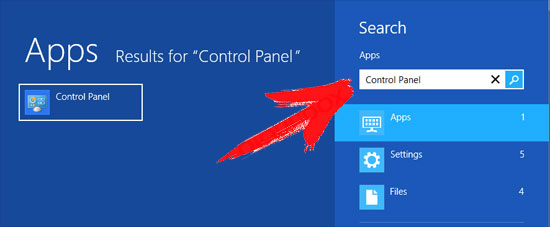
- Choose Uninstall a program and right-click on the unwanted app.
- Click Uninstall .
Delete RIP Ransomware from Your Browsers
RIP Ransomware Removal from Internet Explorer
- Click on the Gear icon and select Internet Options.
- Go to Advanced tab and click Reset.

- Check Delete personal settings and click Reset again.
- Click Close and select OK.
- Go back to the Gear icon, pick Manage add-ons → Toolbars and Extensions, and delete unwanted extensions.
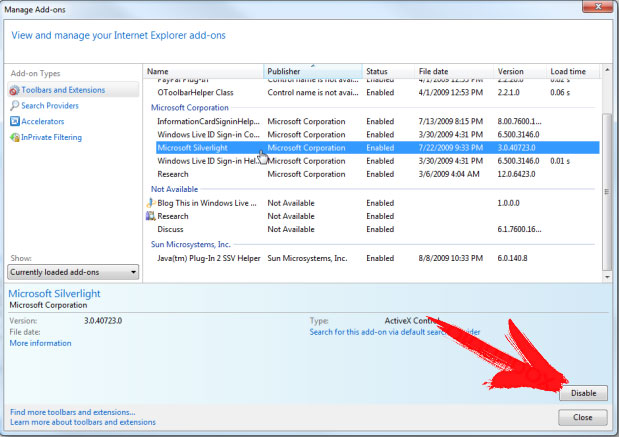
- Go to Search Providers and choose a new default search engine
Erase RIP Ransomware from Mozilla Firefox
- Enter „about:addons“ into the URL field.
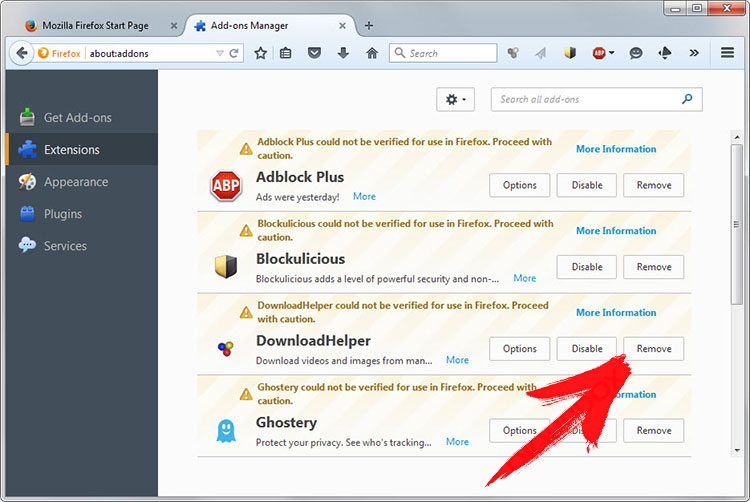
- Go to Extensions and delete suspicious browser extensions
- Click on the menu, click the question mark and open Firefox Help. Click on the Refresh Firefox button and select Refresh Firefox to confirm.
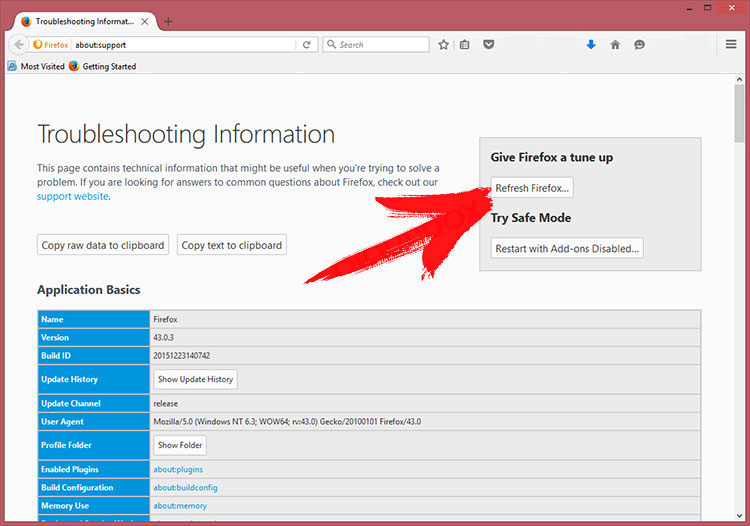
Terminate RIP Ransomware from Chrome
- Type in „chrome://extensions“ into the URL field and tap Enter.
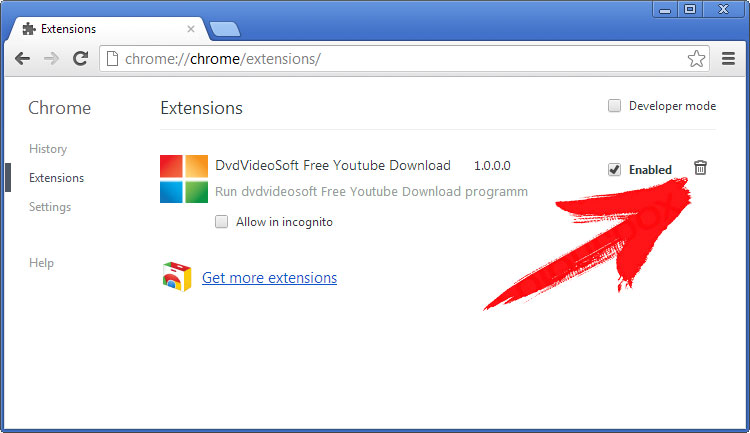
- Terminate unreliable browser extensions
- Restart Google Chrome.
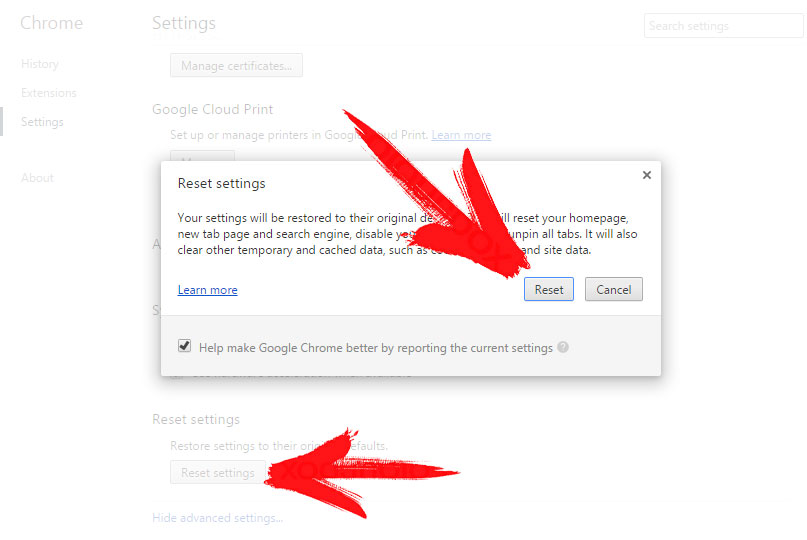
- Open Chrome menu, click Settings → Show advanced settings, select Reset browser settings, and click Reset (optional).